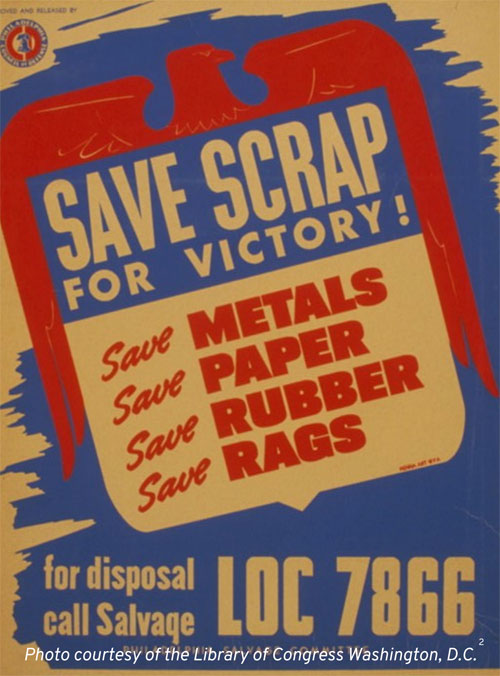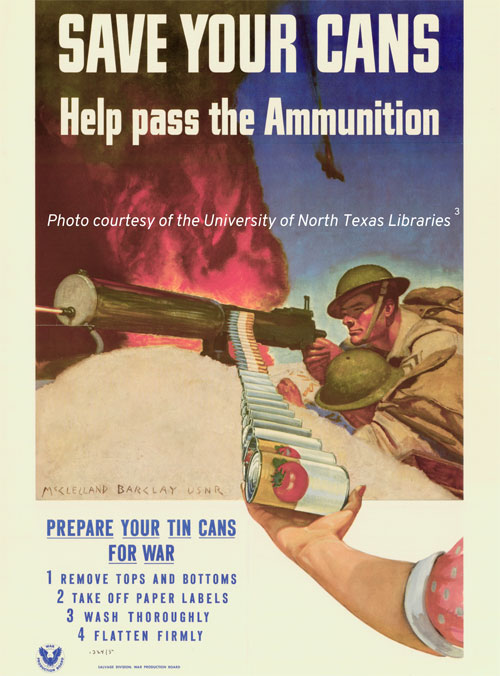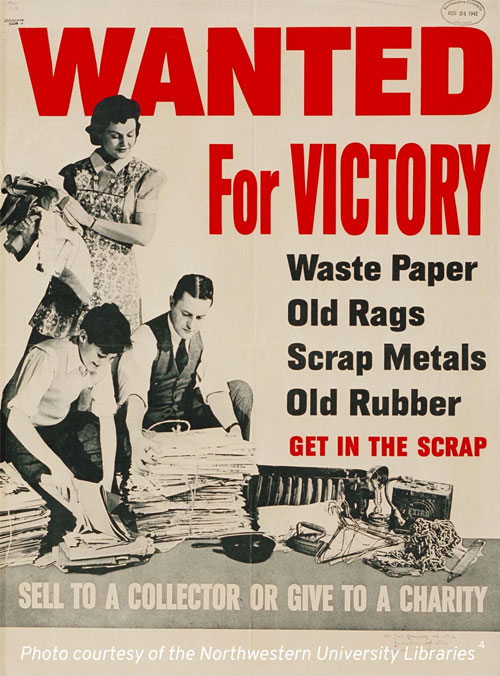The History of Metal Recycling – When did it all start?
Reusing and recycling has been a part of our history for centuries. People were reusing their possessions because they didn’t have much of a choice, everything was handmade, making new items from scratch meant time and effort, so reusing was usually the preferred option.
In the pre-industrial economy, there wasn’t much waste to handle and what wasn’t reusable was mainly buried. When Western Europe and North America became industrialized the trash produced increased considerably and there wasn’t enough space to continue burying it, so garbage was thrown into rivers or dumped into streets making cities dirty and disease-ridden. In 1885 New York City introduced the first incinerator ever built. Still waste was buried or burnt, not recycled or reused at that time.
Sometime after, the perception of garbage changed and there was value to reusing waste. Gradually people realized that they could make newspapers from old ones and aluminum could be infinitely recycled. By 1904, aluminum recycling factories made their first appearance in the US. It was a few years later, in 1917, that Albert G. Sims started his scrap metal recycling business in Sydney, Australia!
Although, Metal recycling is claimed, by some, to have been invented by patriots in 1776 when a statue of King George III was melted down to make 42,088 bullets, during the war for American independence from the British.
However, not everyone agrees! Archeologists, in fact, claim that metal recycling was a popular practice in 400 BC, during times of distress. Biblical verses also refer to metal recycling practices by mentioning conversion of plowshares into swords and swords into plowshares!
World War II, in particular, had a huge impact on metal recycling. In fact, during World War II, we saw the first nationwide campaign encouraging metal recycling. Any metal was considered valuable; pots, pans, metal toys, car bumpers, farm equipment, Civil War cannons and iron fences, were all melted down for a “better future”. The Government recycled these scrap metal items to build ships, airplanes and other equipment to fight the war.
 |  |  |
The concept of recycling has always existed, so we cannot establish a starting date for sure. Humans have always reused things to alleviate the scarcity of resources, the idea that something was broken and therefore garbage is the result of our consumer society.
What has changed nowadays and evolved is its motivation. Historical recycling was almost exclusively an economic matter, the focus has moved onto the environment only in recent years.
In fact, in the 1970s the largest environmental movement furthering the modern concept of recycling began and the strong narrative closely linked to recycling: preserving resources to save the environment actually started to spread. This was later established as the first Earth Day!
Sims Metal has more than a 100 years of experience in metal recycling. We provide scrap metal recycling services to businesses, other recyclers and the general public. Each year we divert millions of tonnes of secondary materials from landfill to generate maximum value and minimal waste. By doing so we reduce the need to extract virgin raw materials and, by keeping resources in use as long as possible, we are an enabler of the circular economy.
Text Sources:
Byers, A. (2017). Reuse It: The History of Modern Recycling. United States: Cavendish Square Publishing LLC. Retrieved 25 January, 2022
Fishman, K. (2015, January 15). Scrap for Victory! The Library of Congress. Retrieved 25 January 2022
Zimring, C. A. (2005). Cash for Your Trash: Scrap Recycling in America. United Kingdom: Rutgers University Press. Retrieved 25 January 2022
Bobick, J. E., & Balaban, N. E. (Eds.). (2014). The handy science answer book ([Enhanced Credo edition]. 4th, Ser. The handy answer book series). Credo Reference. Retrieved February 4, 2022
Photo Sources:
